For years, the Müller-Guttenbrunn Group has been consistently striving to shift recycled materials – especially scrap iron – from road to rail. Danny Steriti and Thomas Lippuner from Swiss company MGG Trade sum up MGG’s mission of cross-border rail transport in unison: ‘For environmental and cost reasons, we want to transport as much of our recycled secondary raw materials as possible by rail!’ What began with unreliable wagon availability and long transit times is now a strategic logistics programme with clear results: our own wagons, through locomotive concepts and fixed corridors to Italy.
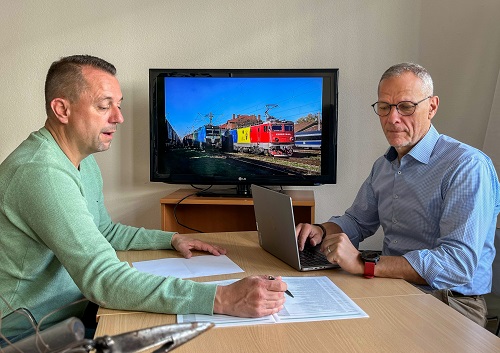
Danny Steriti and Thomas Lippuner from MGG Trade agree: „Without better rail infrastructure, clear rules and fair conditions, Europe will not be able to handle the growing volumes of scrap by road. The future runs on rails!“
The arguments of ‘environmental and cost reasons’ sound like logical common sense. However, when examined in detail, the issue of cross-border rail transport proves to be extremely complex, as Danny Steriti, Managing Director of MGG Trade, explains: „The challenges involved in transporting secondary raw materials by rail across Europe are manifold. For example, train drivers are only allowed to drive through a country if they speak the respective language and have a country-specific qualification. Or the question of what happens to a planned rail transport if a mudslide has blocked a track for a long period of time. Detours around such obstacles are not as easy to arrange with trains as they are with road transport. Or the issue of delays. Or the availability of wagons, locomotives and train paths. There are many reasons why cross-border rail transport is anything but straightforward.“
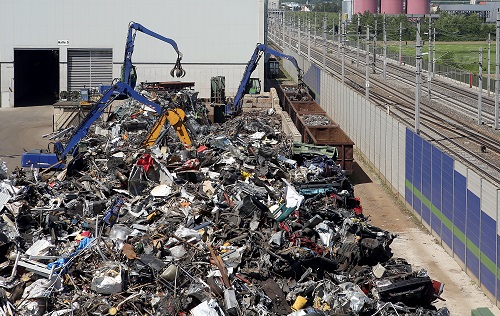
Thanks to direct rail connections at most of its plants – such as here at Metrec in Amstetten – the Müller-Guttenbrunn Group has ideal conditions for transporting goods by rail. The Group currently transports around 25,000 tonnes of secondary raw materials per month by rail.
Important prerequisites: Own rail connections at MGG plants.
Despite these obstacles, the balance sheet of the two train specialists is clearly positive. Thanks to direct rail connections at most of its plants, the Müller-Guttenbrunn Group has ideal conditions for transporting goods by rail. And the MGG transport figures impressively demonstrate that this infrastructure is also being used: the group currently transports around 25,000 tonnes of secondary raw materials per month by rail. A typical train comprises around 22 wagons, each carrying around 1,100 net tonnes. „A block train with 22 wagons replaces around 44 lorry journeys on the road. Not to mention that trucks also have to make the return journey, which is not always fully loaded,“ Steriti calculates. At peak times, MGG trains can even carry up to 30 wagons. Such large volumes not only offer CO₂ advantages, but also make process logistics significantly more efficient for steelworks when goods are delivered by rail. Trains are unloaded in bulk at the factory station, sometimes directly into the melting furnaces or close to storage areas. Truck deliveries, on the other hand, create time slot and congestion problems at the gates and require additional space, as trucks are usually not allowed to drive directly to the loading zones of the melting furnaces.
From individual wagons to block trains and thus greater efficiency.
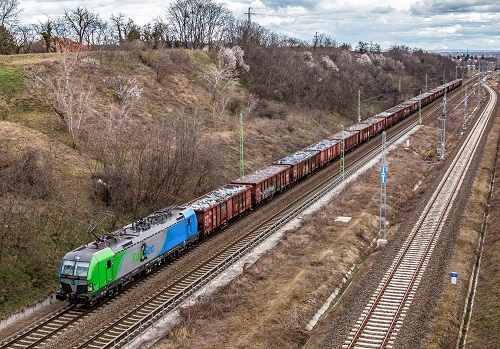
MGG Trade transports scrap trains as continuous block trains. This reduces interfaces, saves time and increases predictability in a system characterised by track capacity shortages, construction sites and prioritisation in favour of time-critical goods such as food.
The scrap iron is primarily transported within Europe. For overseas destinations (currently mainly India), containers are used, which are transported to the ports by lorry or also by rail. The main geographical arteries of MGG rail transport in Europe run from Romania, Austria and Hungary primarily to Italy, as there are numerous steelworks in northern Italy that require ever-increasing quantities of secondary raw materials. MGG Trade now sends scrap trains as continuous block trains instead of collecting individual wagons along the way, as was previously the case. This reduces interfaces, saves time and increases predictability in a system characterised by track shortages, construction sites and prioritisation in favour of time-critical goods such as food. Thomas Lippuner sums up the operational idea behind MGG block trains: „The less we have to the more flexible and efficient we are. At the Romanian-Hungarian border, the Romanian train driver gets off, the Hungarian driver gets on, and the same locomotive continues on its way. This saves time, reduces interfaces and lowers costs.“ However, this change would not have been possible without our own wagons. MGG has therefore leased or purchased wagons, making it less dependent on state-owned railway companies (EVUs), which own and control the relevant wagons. The choice of the operating EVU, which provides the locomotive and train drivers, is made on a contract-specific basis.
Complex conditions: routes, technology, priorities.
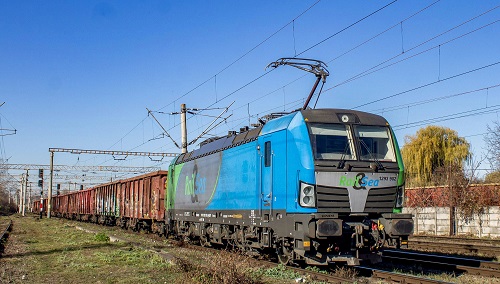
Different power systems, a lack of overhead lines on some sections, insufficient language and route knowledge among train drivers, and country-specific waste and approval regulations make cross-border transport more expensive and slower.
At the same time, the logistical reality remains challenging: different power systems, a lack of overhead lines on some sections, insufficient language and route knowledge among train drivers, and country-specific waste and approval regulations make cross-border transport more expensive and slower. „Recycled goods such as scrap iron are often at the bottom of the priority list when there are bottlenecks on the routes,“ says Steriti. When natural events, construction work or uncoordinated closures disrupt central axes, railway companies and shippers sometimes have only two options: wait or temporarily switch to lorries. When rail transport comes to a standstill, alternative arrangements involving higher costs and more CO₂ emissions are unavoidable. In 2024/25, despite Swiss-style precision planning, there were periods when MGG had to shift substantial quantities from rail to lorries: „In Hungary, up to 3,000 tonnes were transported by road in one month because nothing was moving on the railways. Even in Austria, we temporarily transported over 1,000 tonnes by lorry,“ says Lippuner with irritation.
The market development of European steel production clearly shows where things are headed. Many steel manufacturers are gradually switching to electric arc furnaces, thereby increasing the proportion of recycled material in the raw material. This also increases the demand for tracks and ‘recycling trains’ that deliver the secondary raw materials. For Danny Steriti, there is therefore only one way forward: „I see it very clearly: the transport of secondary raw materials such as scrap iron by rail must be expanded, otherwise we will collapse on the roads. The traffic reality on transit routes such as the Brenner speaks for itself. Even today, capacities are already totally exhausted in many places!“
What needs to change: Three appeals to politicians.
However, for rail to continue to develop its potential, more is needed than the will of recyclers and their customer companies. Thomas Lippuner therefore makes three essential demands: „Firstly, intact and additional infrastructure is urgently needed: corridors, track systems and junctions must be expanded and coordinated across borders. Secondly, European regulations need to be tweaked: uniform and, above all, practical EU waste regulations as well as standardised language and qualification requirements in rail operations could significantly speed things up. And thirdly, economic signals are needed from politicians: track access charges should remain stable and predictable, rail logistics should be specifically promoted and road subsidies should be critically reviewed.“ MGG Trade Managing Director Danny Steriti puts it even more bluntly: „Rail is green. Period. It is simply unacceptable that track access charges are rising while diesel is being subsidised!“
Recycling with traction: bulk goods belong on the railways.
Even though the political pace is often slower than the needs of industry, the Müller-Guttenbrunn Group, which operates throughout Europe, is proving what is already possible today: resilient EVU partnerships, its own wagon fleets, through locomotives and flexible but clear planning. Where individual track routes are temporarily blocked, alternative routes and intermediate storage facilities are creatively combined. And where there is no direct rail connection, regional collection points are created to bundle pick-ups and form block trains. The basic idea remains the same: bulk goods belong on the railways. Thomas Lippuner sums it up in a simple formula: „One wagon equals two lorries! And one train means fewer problems!“
The path is clear. Now we need to pick up the pace!
Demand from secondary raw material consumers confirms this call for more rail transport. Large steelworks purchase between 70,000 and 90,000 tonnes of scrap metal per month. And there are several such plants in northern Italy alone. They benefit directly from stable, predictable rail deliveries. For the circular economy and the Müller-Guttenbrunn Group, this means more than just logistics: it is a prerequisite for transporting secondary raw materials to processing sites safely, efficiently and in a climate-friendly manner. Or, as Danny Steriti sums it up: „Without better rail infrastructure, clear rules and fair framework conditions, Europe will not be able to handle the growing volumes of scrap by road. The future is on rails!“
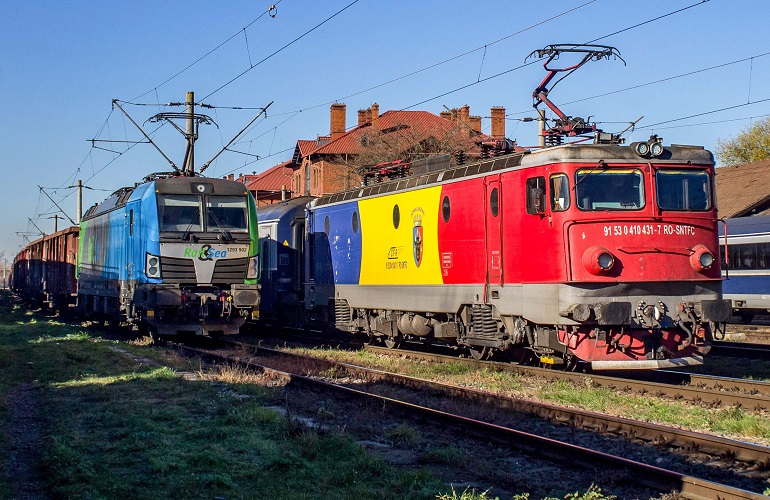
Environmental and cost considerations favour rail transport and can be summarised in a simple formula: one wagon on the railways is equivalent to two lorries on the road!
